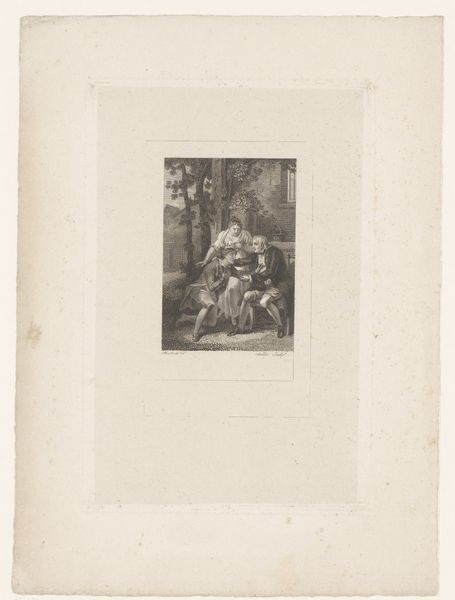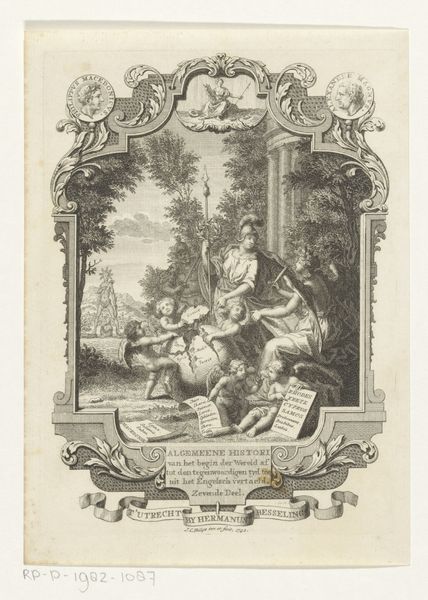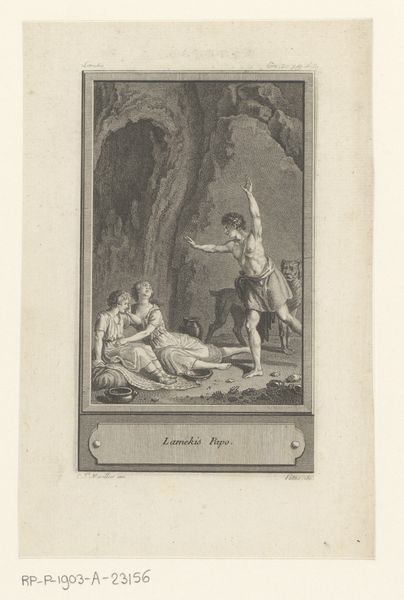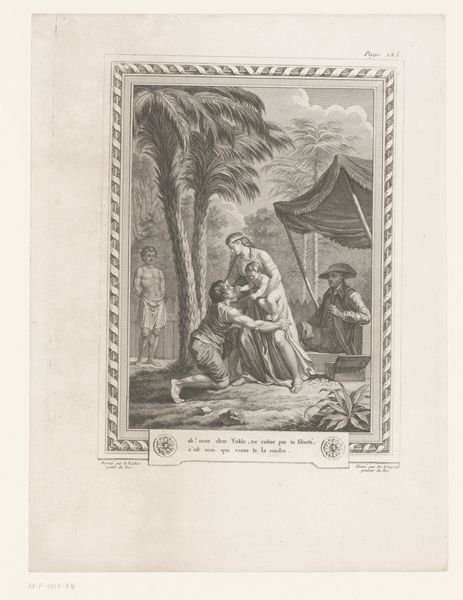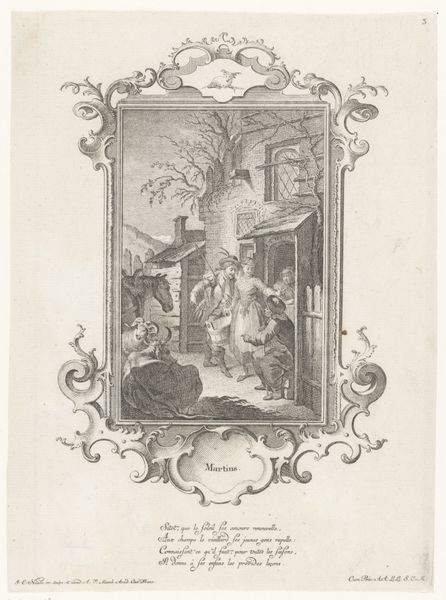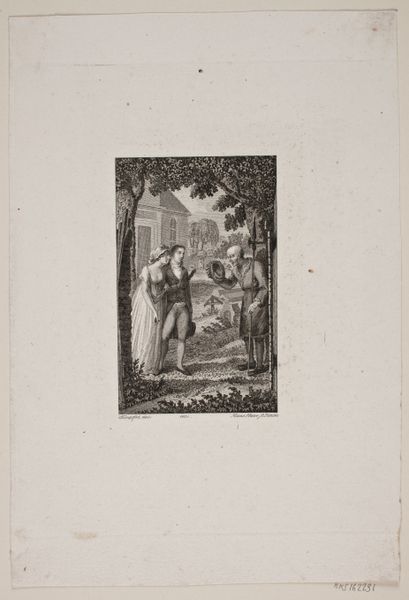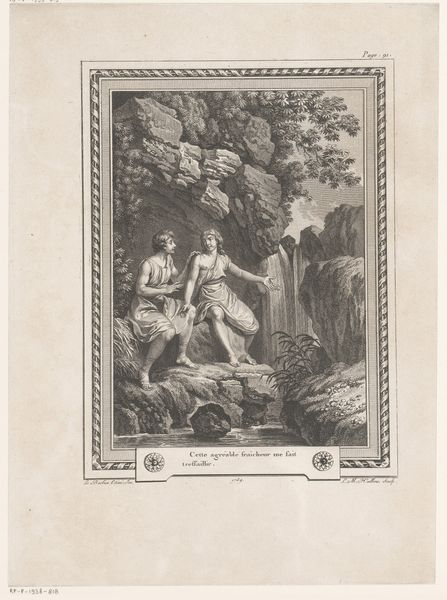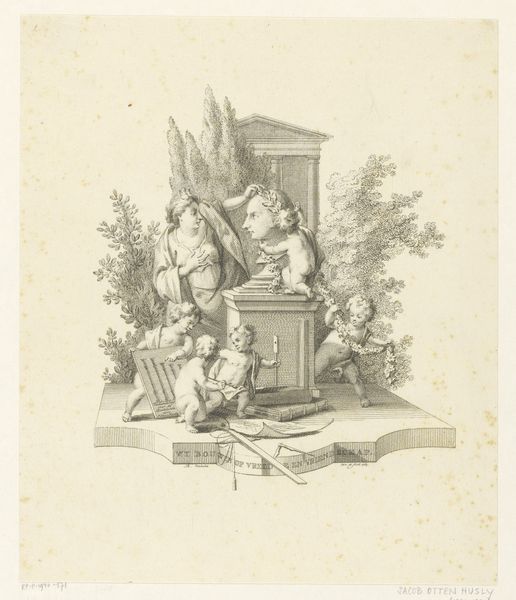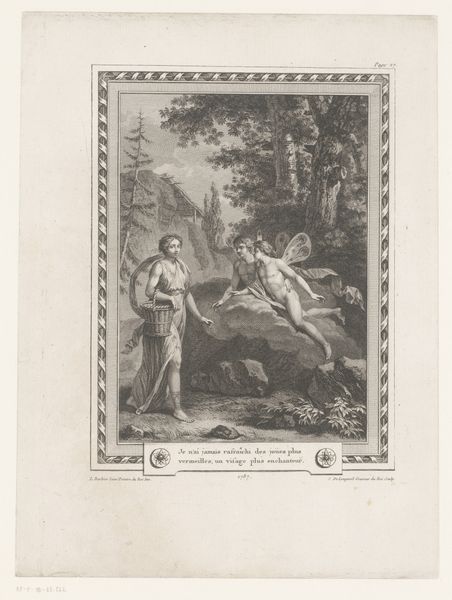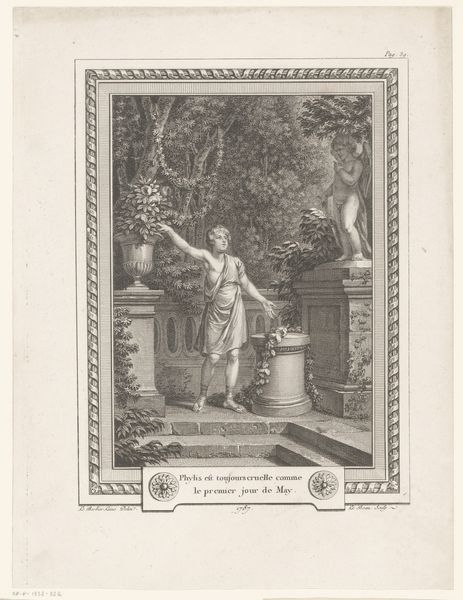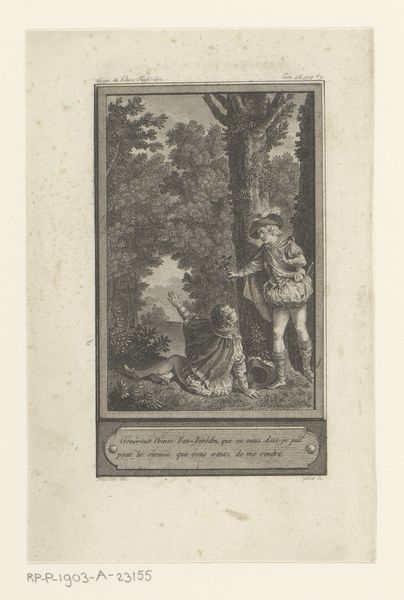
Dimensions: height 273 mm, width 199 mm
Copyright: Rijks Museum: Open Domain
Editor: So, this engraving is titled "Twee vrouwen voor een standbeeld," which translates to "Two Women Before a Statue." It was created between 1740 and 1792 by Joseph de Longueil. The image feels theatrical, almost like a scene from a play. What catches your eye when you look at it? Curator: The seated figure immediately draws my attention. Notice how her form mirrors the classical sculptures adorning the pedestal, yet there’s a distinct difference. The sculptures are idealized representations, symbols of eternal grace, whereas she exudes a more mortal, contemplative sorrow. How might this contrast inform our understanding? Editor: Maybe she is worshipping the statue but cannot be like the idol, like a regular person looking up to God? Curator: An interesting thought. Her downcast gaze, and the actions of the figures at right could indicate emotional or spiritual struggle. But consider the broader context: neoclassicism was re-interpreting classical forms with an eye on philosophy, rationalism and reason in how it communicates visual form. The idealized aesthetic often served as a vessel for narratives of virtue, reason, and even sacrifice. Do you notice other symbolism present? Editor: The basket of fruit feels significant… like an offering, maybe? Curator: Indeed. The fruit, a symbol of abundance and perhaps temptation, lies at the base of the statue, between this scene and the figures behind, suggesting a crucial relationship between devotion, temptation, and human behavior. Also, note how the barren trees juxtapose the classical columns… this reinforces tension. Editor: I never thought of engravings as being so rich in symbolic language. I had always thought they were copies but that really changed my understanding about prints. Curator: Every element here, from the pose of the women to the setting, whispers tales of human experience filtered through a lens of classical ideals. Prints are complex documents and deserve the kind of detailed visual literacy you used here. Editor: Right. There are powerful visual clues and narrative threads when we start to really explore the context. I see it now.
Comments
No comments
Be the first to comment and join the conversation on the ultimate creative platform.

